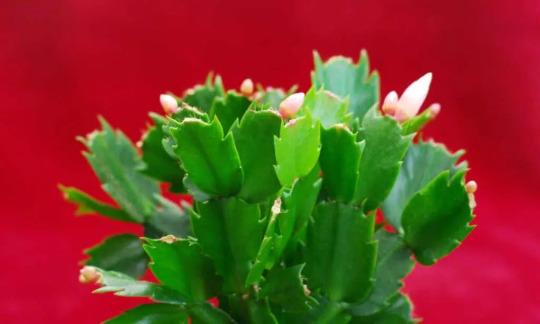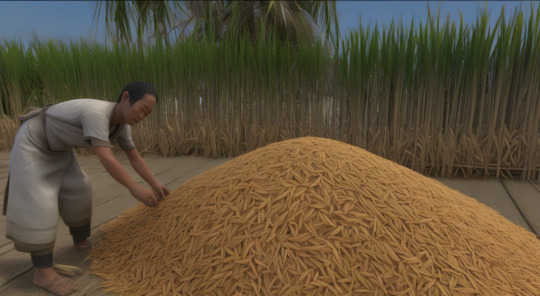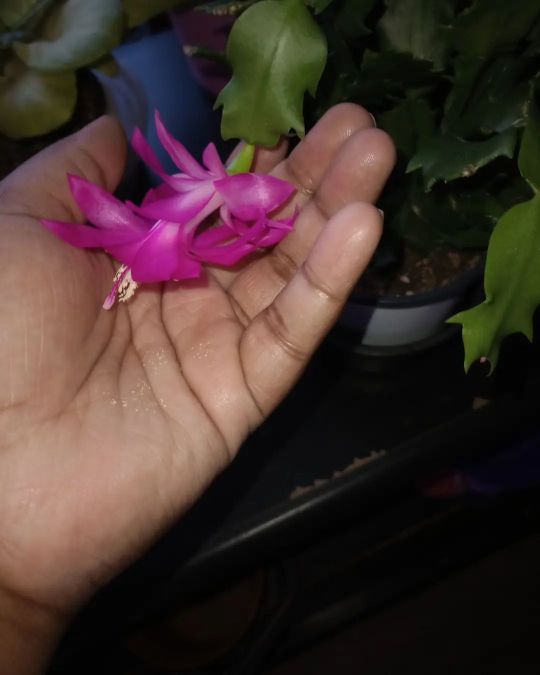#HouseplantCare
Explore tagged Tumblr posts
Text

🌿 Daily Indoor Plant Care Checklist – Keep Your Houseplants Thriving! 🌿
Indoor plants need love too! Follow this easy daily checklist to ensure your green friends stay healthy:
✅ Check soil moisture before watering to avoid overwatering. ✅ Wipe leaves to remove dust and help with photosynthesis. ✅ Rotate your plants to ensure they get even sunlight exposure. ✅ Prune dead leaves for new and healthy growth. ✅ Use a mild fertilizer weekly for nutrient-rich soil. ✅ Keep away from AC vents & direct heat to prevent stress.
Taking care of plants doesn’t have to be difficult—just a few simple steps each day can keep them thriving! 🌱
📍 Shop now: https://www.pixiesgardens.com/ 📞 Contact: 1-470-519-8357
0 notes
Text
𝗣𝗹𝗮𝗻𝘁𝘀 𝗧𝗵𝗮𝘁 𝗞𝗲𝗲𝗽 𝗠𝗼𝘀𝗾𝘂𝗶𝘁𝗼𝗲𝘀 𝗔𝘄𝗮𝘆 𝗡𝗮𝘁𝘂𝗿𝗮𝗹𝗹𝘆 🦟❌
Here are some plants that act as natural mosquito repellents: 🌱𝙇𝙚𝙢𝙤𝙣𝙜𝙧𝙖𝙨𝙨 – Contains citronella, a well-known mosquito repellent. 🌱𝙇𝙖𝙫𝙚𝙣𝙙𝙚𝙧 – Its fragrance keeps mosquitoes and other insects away. 🌱𝘽𝙖𝙨𝙞𝙡 – Repels mosquitoes while adding flavor to your dishes. 🌱𝙈𝙞𝙣𝙩 – Strong scent deters mosquitoes, ants, and spiders. 🌱𝙍𝙤𝙨𝙚𝙢𝙖𝙧𝙮 – Keeps mosquitoes and other pests at bay. 🌱𝙈𝙖𝙧𝙞𝙜𝙤𝙡𝙙𝙨 – Their scent naturally wards off mosquitoes.

#houseorial#houseplantcaretips#indoorplants#plantleaves#houseplantcare#keepmosquitoesaway#bugs#bugsaway#𝗠𝗼𝘀𝗾𝘂𝗶𝘁𝗼𝗲𝘀
0 notes
Text
Want a thriving Philodendron? 🌿 Get to know the stunning varieties, understand their care requirements, and master the best growth hacks for a lush, tropical vibe at home! 🌿
#PhilodendronCare#HouseplantLove#IndoorPlants#PlantParent#GreenLiving#PhilodendronPlants#IndoorJungle#PlantLovers#HouseplantCare#leafygreens
0 notes
Text
FLORALCRAFT Glass Water Mister: A Must-Have Tool for Gardeners and Plant Lovers If you're a gardening enthusiast or someone who simply enjoys taking care of plants, the FLORALCRAFT Glass Water Mister is a must-have tool in your collection. Designed with both functionality and aesthetic appeal in mind, this high-quality water mister from Michael Dark offers an efficient way to care for your plants, keeping them hydrated and healthy. Elegant and Functional Design One of the standout features of the FLORALCRAFT Glass Water Mister is its elegant design. Made from high-quality glass, the mister has a sleek, vintage-inspired look that complements any indoor garden or plant collection. Its transparent body allows you to easily monitor the water level, ensuring that you're never caught off guard with an empty bottle. The long, slender neck of the mister provides a gentle, even spray, making it perfect for delicate plants that require a soft touch.

#FLORALCRAFT#GlassWaterMister#PlantCare#IndoorGardening#SustainableGardening#HomeDecor#MichaelDark#WaterMister#GardeningTools#EcoFriendly#TerrariumCare#VintageDesign#HouseplantCare#HumidityBoost#IndoorPlants#SucculentCare#PlantLovers#GardenEssentials#GreenThumb#PlantSprayer#HydrationTools
0 notes
Text
Want to add a touch of tropical elegance to your home? Meet the Lipstick Plant! 🌿
This stunning houseplant boasts vibrant, lipstick-like flowers and cascading vines. Perfect for hanging baskets or wall planters! 🌺
Learn how to care for your Lipstick Plant with our comprehensive guide:
• Lighting requirements
• Ideal temperatures
• Watering tips
• Fertilization schedule
• Pruning techniques
Ready to bring this beauty into your home? Check out our full guide on growing and caring for Lipstick Plants
0 notes
Text
Black Spots On Pothos Leaves
If you've noticed black spots on your Pothos leaves, don't panic! While it can be concerning, this common issue can be easily resolved with the right care. Black spots on Pothos leaves are often a sign of fungal or bacterial infections. These infections can occur due to overwatering or poor air circulation.

To treat the black spots, start by trimming off the affected leaves and improving the plant's growing conditions. Make sure to provide proper drainage, avoid overwatering, and place the Pothos in a well-ventilated area. Additionally, you can use a fungicide or a mixture of water and neem oil to control the infection. With a little attention and care, your Pothos will soon be back to its vibrant, healthy self, free from those pesky black spots.
#PothosLeaves#BlackSpots#PlantHealth#IndoorGardening#HouseplantCare#LeafTroubles#GardeningTips#PlantAdvice#HealthyPothos#GreenThumb#for you
1 note
·
View note
Text
"🏘Clean Green: Tips for Growing Indoor Plants Without the Mess🪴"
https://ilovegardening.in/2024/04/07/maintaining-a-clean-home-oasis-tips-for-growing-indoor-plants-dirt-free/
Maintaining a Clean Home Oasis: Tips for Growing Indoor Plants Dirt-Free! – ILoveGardening Keep your home clean and green with these expert tips for growing indoor plants without the mess! 🌿 Say goodbye to soil spills and water stains with our practical advice.
0 notes
Text
Creating the Perfect Indoor Environment for Your Christmas Cactus
As the holiday season approaches, many of us eagerly anticipate the bloom of our beloved Christmas cactus. These vibrant and festive plants are known for their beautiful flowers that add a touch of color to any indoor space. However, to ensure your Christmas cactus thrives and blooms to its full potential, it's essential to create the perfect indoor environment. In this guide, brought to you by Kavya Organic Farm, we'll explore the key steps to cultivate a healthy and flourishing Christmas cactus right in your home.

Understanding Your Christmas Cactus:
Before diving into the specifics of care, let's take a moment to understand the needs of the Christmas cactus. Native to the tropical rainforests of Brazil, these plants thrive in environments that mimic their natural habitat. They prefer moderate temperatures, bright but indirect sunlight, and well-draining soil.
Lighting Requirements:
One of the most critical factors in caring for your Christmas cactus is providing the right amount of light. These plants thrive in bright, indirect sunlight. Place your Christmas cactus near a window where it can receive ample sunlight throughout the day, but avoid direct sunlight, as it can scorch the delicate leaves.
Temperature and Humidity:
Maintaining the ideal temperature and humidity levels is crucial for the health of your Christmas cactus. These plants prefer temperatures between 60°F and 70°F during the day and slightly cooler temperatures at night. Additionally, they thrive in moderate humidity, so consider using a humidifier or placing a tray of water filled with pebbles beneath the plant to increase humidity levels.

Watering and Soil:
Proper watering is key to the health of your Christmas cactus. Allow the top inch of soil to dry out between waterings, then water thoroughly, allowing excess water to drain away. Avoid overwatering, as this can lead to root rot. Additionally, use a well-draining potting mix specifically formulated for cacti and succulents to ensure proper drainage and prevent waterlogged soil.
Fertilizing:
During the growing season, which typically occurs in spring and summer, fertilize your Christmas cactus every two to four weeks with a balanced, water-soluble fertilizer diluted to half strength. However, avoid fertilizing during the fall and winter months when the plant is dormant.
Pruning and Maintenance:
Regular pruning is essential for maintaining the health and appearance of your Christmas cactus. Remove any dead or decaying stems and trim back overgrown branches to encourage new growth. Additionally, periodically remove any dust or debris from the leaves to prevent pests and diseases.
In conclusion, creating the perfect indoor environment for your Christmas cactus is essential for its health and vitality. By following the tips outlined in this guide, you can ensure that your Christmas cactus thrives and blooms year after year, bringing joy and beauty to your home during the holiday season. For high-quality organic products and expert gardening advice, trust Kavya Organic Farm. With our help, you can enjoy a thriving Christmas cactus and a green, vibrant indoor space.
0 notes
Text
"Quick and Simple Preparation Guide: Carbonized Rice Husk"

👋Hey friends! Have you heard about carbonized rice husk and how useful it can be? If you want to make some yourself, it's actually pretty easy and straightforward. Here's a quick rundown of what you'll need and the basic steps:

We also have a detailed video on this same topic that you can explore for a more visual guide to the process. 👇 https://youtu.be/dTeg0niPGKc what carbonized rice husk is?Rice Husk is the outer cover of rice grains. Farmers remove it during processing. Normally it's just burned as waste. But researchers found we can turn it into something useful! By burning rice husk in a special way with minimal oxygen, it becomes "carbonized". However, on the other hand, this process causes certain parts to turn black and remain solid instead of burning. Carbonized rice husk, also called biochar, is good for soil. It helps the soil hold more water and nutrients. Plants grow stronger with carbonized rice husk in the dirt. Using Carbonized Rice Husk for Plants: It's easy for farmers to make. You just need a container to burn rice husk in slowly. Then the black chunks left over are carbonized rice husk. How can carbonized rice husk be beneficial for plants?Carbonized rice husk serves as an excellent growing medium due to its lightweight nature, high porosity, enhanced water retention, improved drainage, and sterile properties. It also provides a pH-neutral environment for plant growth and offers good aeration and resistance to decay. These properties make it an ideal choice for sustainable and organic gardening practices. What are the properties of carbonized rice husk that make it suitable for plants?The physical and chemical properties of carbonized rice husk, such as its lightweight nature, increased porosity, and ability to absorb foul odors, contribute to its effectiveness as a soil medium. Its resistance to decay and neutral pH further enhance its suitability for promoting healthy plant growth. Are organic fertilizers suitable for use with carbonized rice husk? Is Leaf Mold compost beneficial in conjunction with carbonized rice husk?Yes, leaf mold compost can be highly beneficial when used in conjunction with carbonized rice husk. The combination of leaf mold compost and carbonized rice husk offers a sustainable and nutrient-rich environment for plant growth. Leaf mold compost enriches the soil with organic matter, promoting the growth of beneficial microorganisms and enhancing soil fertility. what is the ratio of organic fertilizer we can add to carbonized rice husk?The ideal ratio will depend on factors like soil needs, crop demands, compost nutrient levels, and production goals. Start with lower ratios and monitor impacts. For example, with 4% carbonized rice husk, use 2-3% compost. With 10% carbonized rice husk, use 1-2% compost. Adjust as needed based on soil tests. In Quick and Simple Way we have presented a video on the same topic👇. https://youtu.be/b66cfx6Jlhw
Step-by-Step Quick and Simple Preparation Guide:
Acquiring the Rice Husk: Begin by sourcing high-quality rice husks from local rice mills or suppliers. Carbonization Process: In a controlled environment, partially burn the rice husks to achieve a carbonized state. We can do this using a special oven or a special machine called a pyrolysis unit. For Home Gardeners, you can make this yourself at home with Quick and Simple steps. Just watch the video by Clicking Here." Cooling and Storage: Once carbonized, allow the rice husk to cool before storing it in a dry and well-ventilated area. Benefits and Applications: The carbonized rice husk presents numerous benefits, including high porosity, water retention capacity, and resistance to microbial degradation. It can be utilized as a soil amendment, a component in potting mixes, or even as an eco-friendly alternative to traditional mulch. Using Carbonized Rice Husk as a Soil Medium: When used as a soil medium, carbonized rice husk enhances soil aeration, improves water retention, and provides a stable environment for microbial activity. Its balanced carbon-to-nitrogen ratio contributes to the overall health of the soil, making it an invaluable addition to gardening and agriculture practices. Preparing Carbonized Rice Husk for Planting : Before incorporating carbonized rice husk into the planting medium, it is essential to ensure proper preparation. Start by rinsing the material to remove any impurities or dust. Soaking it in water for a brief period can also soften it slightly, making it easier to handle during mixing and planting. Incorporating Carbonized Rice Husk into Planting Medium: For a well-balanced planting medium, mix carbonized rice husk with soil or compost in a 1:1 ratio. This blend provides optimal aeration, water retention, and nutrient availability. Thoroughly integrate the components for a homogeneous mixture. Choosing the Right Plants for Carbonized Rice Husk Medium: Carbonized rice husk can be beneficial for various types of plants, particularly those that prefer well-draining soil, such as succulents, cacti, and certain herbs. It is crucial to research the specific requirements of desired plants to ensure compatibility as a planting medium. Conclusion: Using half-burned rice husks in soil is great for helping plants grow and making gardens healthier. It's an eco-friendly way to improve the soil, keep water in, give plants good stuff to grow, stop weeds, and help good tiny bugs in the soil. If you try using burned rice husks in your gardening, you'll see a big difference in how well your plants grow, and it's better for the environment too!. Learn with Quick and Simple steps. Read the full article
#carbonizedricehusk#eco-friendlysolutions#gardening#GardeningTips#HouseplantCare#LeafyGreens#organicgardening#PlantGrowth#soilenhancement#soilnutrients#sustainableagriculture#sustainableecosystems#UrbanGardening
0 notes
Photo

What used to be my craft room is basically a plant room. Why? Blooms are why. They like this room for some reason and I'm not sure why. #offlinegoings #blooms #houseplants #schlumbergera #saintpaulia #houseplantcare #houseplants #GoodNews https://www.instagram.com/p/Cq0docQumUZ/?igshid=NGJjMDIxMWI=
0 notes
Text

🌿 Want lush, thriving houseplants? Here are 10 indoor gardening tips to keep your greenery happy and healthy! 🌱✨ 1️⃣ Choose the right plants for your space 🌞 2️⃣ Provide adequate light (natural or grow lights) 💡 3️⃣ Water consistently—but don’t overwater! 💦 4️⃣ Use well-draining soil for happy roots 🏡 5️⃣ Keep humidity levels in check 🌫️ 6️⃣ Feed your plants with the right fertilizer 🌱 7️⃣ Dust off leaves to help them breathe 🍃 8️⃣ Rotate plants for even growth 🔄 9️⃣ Watch for pests and act fast! 🐜 🔟 Repot when needed for continued growth 🌿 Turn your home into a plant paradise! 🌿💚 Follow me for more real estate tips and home inspiration! 🏡✨ #HouseplantCare #GreenThumb #IndoorGardening #RealEstateTips #Mainerealestate http://dlvr.it/TJwtrf
0 notes
Text

🌿 Is Your Houseplant Sick? 🌿
Don't let yellowing leaves or tiny webs ruin your indoor jungle! Your plant might be suffering from overwatering or spider mites—but don’t worry, we’ve got the solutions!
💦 Overwatering Signs: Yellow leaves, root rot, mushy stems ✔ Fix it: Reduce watering, improve drainage, and repot if needed. 🐞 Spider Mite Signs: Tiny webbing, yellow speckles ✔ Fix it: Use neem oil, increase humidity, and introduce ladybugs!
Give your plants the care they deserve and keep them thriving! 🌱✨ 📲 Contact us: 1-470-519-8357 🌐 Visit: https://www.pixiesgardens.com/
#HouseplantCare#PlantLovers#IndoorGardening#PlantHealth#GreenThumb#HealthyPlants#GardeningTips#SpiderMites#Overwatering
0 notes
Text

GARDENING TIPS FOR BEGINNERS
Visit The Website for more ideas
https://homegardeen.com
#IndoorGardening #PlantCare #GardeningHacks #Houseplants #PlantLovers #PlantRescue #GardeningTips #HouseplantCare #ReviveYourPlant #GreenThumb #UrbanJungle #PlantLover #IndoorPlants #EasyGardening #PlantParent #GrowGreen #HomeGardening #PlantTips #HealthyPlants #GardeningForBeginners #DIYGardening #SaveYourPlants #BotanicalCare #IndoorGardenIdeas #PlantHealth
0 notes
Text
Add a pop of the tropics to your home with the Bird of Paradise! 🌺 Explore its striking varieties, growth essentials, and easy care tips to enjoy this bold, beautiful plant. 🌿
#BirdOfParadise#HousePlantCare#TropicalPlants#PlantLovers#indoorjunglebloggers#BirdOfParadisePlant#IndoorPlants#TropicalVibes#PlantParent#HouseplantGoals
0 notes
Text
FLORALCRAFT Glass Water Mister | Michael Dark
FLORALCRAFT Glass Water Mister: A Must-Have Tool for Gardeners and Plant Lovers
If you're a gardening enthusiast or someone who simply enjoys taking care of plants, the FLORALCRAFT Glass Water Mister is a must-have tool in your collection. Designed with both functionality and aesthetic appeal in mind, this high-quality water mister from Michael Dark offers an efficient way to care for your plants, keeping them hydrated and healthy.
Elegant and Functional Design One of the standout features of the FLORALCRAFT Glass Water Mister is its elegant design. Made from high-quality glass, the mister has a sleek, vintage-inspired look that complements any indoor garden or plant collection. Its transparent body allows you to easily monitor the water level, ensuring that you're never caught off guard with an empty bottle. The long, slender neck of the mister provides a gentle, even spray, making it perfect for delicate plants that require a soft touch.
The water mister is also equipped with a sturdy brass nozzle and handle, adding a touch of durability and sophistication. The overall construction makes it not only a functional tool but also an attractive piece of decor that blends seamlessly with other gardening supplies and home decor items.
Perfect for Indoor Plants and Terrariums Whether you're looking to hydrate your indoor plants, mist your terrariums, or even give your orchids and ferns the moisture they need, the FLORALCRAFT Glass Water Mister is up to the task. The fine mist it produces ensures that the water is distributed evenly, preventing over-watering or damage to your plants. This feature is especially important for delicate plants that thrive in humid environments, such as succulents, air plants, and tropical varieties.
Its gentle mist also helps to increase the humidity around your plants, mimicking the natural conditions they thrive in. It’s ideal for creating the perfect microclimate in your home for plants that need additional moisture to flourish.

Easy to Use and Refill The FLORALCRAFT Glass Water Mister is incredibly user-friendly. It has a simple pump-action mechanism that ensures a smooth, controlled spray with minimal effort. This means that you can provide your plants with the right amount of mist without overexerting yourself. The large opening of the glass container makes refilling quick and hassle-free, so you can spend more time tending to your plants and less time worrying about your tools.
Additionally, its compact size makes it easy to store when not in use, and it doesn’t take up much space on shelves or counters. Its lightweight design ensures that even young gardeners can handle the mister with ease.
Eco-Friendly and Sustainable As sustainability becomes increasingly important to gardeners and plant lovers, the FLORALCRAFT Glass Water Mister provides a more eco-friendly option compared to plastic alternatives. The durable glass construction means that the mister is built to last, reducing the need for frequent replacements. Its brass nozzle and handle are not only stylish but also resistant to wear, ensuring longevity.
By opting for a glass water mister, you're reducing the use of disposable plastic sprayers and contributing to a more sustainable gardening practice.
A Versatile Tool While the FLORALCRAFT Glass Water Mister is an essential tool for plant care, it’s also incredibly versatile. In addition to its primary function as a plant mister, it can be used for a variety of other purposes. Some common uses include:
Hydrating flowers and houseplants: A gentle mist helps keep plants hydrated without soaking the soil. Creating a humidity boost for indoor plants: Ideal for plants like orchids or ferns that thrive in moisture-rich environments. Decorative element for your home: Its vintage appeal makes it a great addition to home decor, especially for those who love botanical-themed spaces. Cleaning delicate items: The fine mist is perfect for lightly spritzing delicate surfaces, such as artwork or certain fabrics. Conclusion The FLORALCRAFT Glass Water Mister from Michael Dark is the perfect blend of beauty and practicality. Whether you're an experienced gardener or a beginner, this elegant tool will elevate your plant care routine. Its sleek design, efficient spray mechanism, and sustainable materials make it a fantastic choice for anyone looking to enhance their plant-loving experience. Take your plant care to the next level with the FLORALCRAFT Glass Water Mister—a true essential for every garden and home.
#GlassWaterMister#PlantCare#IndoorGardening#SustainableGardening#HomeDecor#MichaelDark#WaterMister#GardeningTools#EcoFriendly#TerrariumCare#VintageDesign#HouseplantCare#HumidityBoost#IndoorPlants#SucculentCare#PlantLovers#GardenEssentials#GreenThumb#PlantSprayer#HydrationTools#FLORALCRAFT
0 notes
Text

NATIONAL HOUSEPLANT APPRECIATION DAY
One of the best ways to enhance a space is by adding house plants. The busy holidays cause many of us to neglect some of our regular routines, including houseplant care. National Houseplant Appreciation Day on January 10th serves as a reminder to give your houseplants a little extra attention to keep them thriving. #NationalHouseplantAppreciationDay #HousePlants #Plants #HousePlantCare #PlantTips #Decorating #FengShui #REMAX #REMAXBestChoice
0 notes